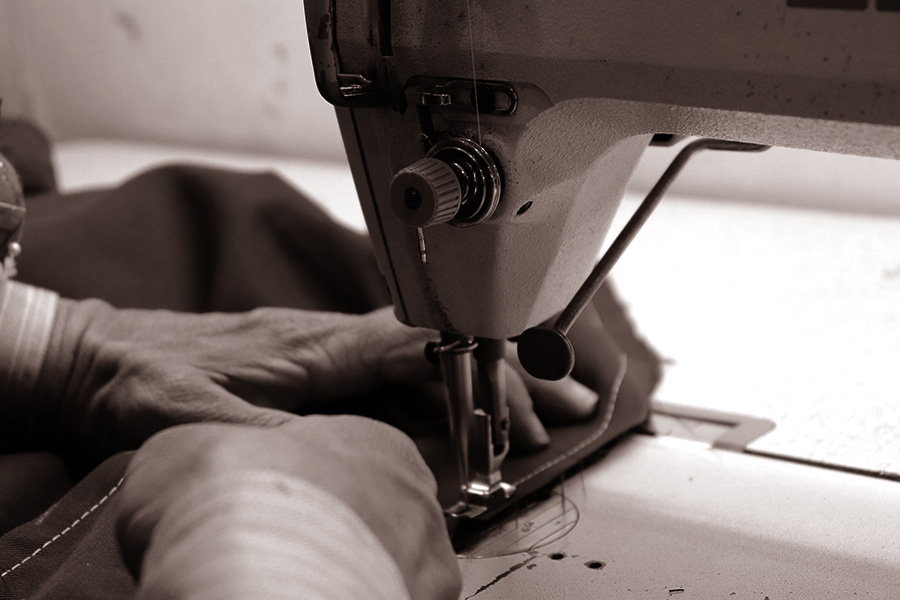Expert Tailor Perth: Crafting Custom Suits for each Occasion
Expert Tailor Perth: Crafting Custom Suits for each Occasion
Blog Article
Recognizing the Tailoring Refine: From Material Choice to Final Fitting for the Perfect Closet
The customizing procedure is a complicated interplay of art and science, beginning with the crucial decision of textile option and finishing in the exact modifications of final installations. Each textile kind brings special high qualities that influence not just the visual charm however also the garment's longevity and viability for different events. Understanding the nuances of customizing strategies can boost one's closet to unprecedented levels of sophistication. As we discover these aspects additionally, one must consider exactly how also the tiniest information can significantly influence the overall outcome of one's personal style.
Significance of Textile Selection
Selecting the appropriate fabric is critical in the tailoring process, as it straight affects the comfort, toughness, and total aesthetic of the final garment (tailor perth). The choice of textile sets the foundation for the garment's style, performance, and performance. Various fabrics possess unique buildings, such as breathability, stretch, and weight, which can significantly influence just how the garment drapes and fits the body
In addition, fabric choice affects the garment's longevity and convenience of treatment. High-quality fabrics can withstand wear and tear, maintaining their look and framework with time, while lower-quality products might cause pilling or fading. Furthermore, the best material contributes to the garment's ability to change throughout occasions and seasons, thereby boosting versatility.
A customized item made from a proper fabric not only showcases workmanship yet likewise elevates the user's self-confidence. Understanding the subtleties of textile choice is paramount for any kind of tailoring endeavor. It makes certain that the end product not just meets the visual wishes of the client however likewise aligns with practical requirements, therefore accomplishing a harmonious equilibrium between type and function in the customized wardrobe.
Kinds of Fabrics and Their Usages
Comprehending the numerous sorts of fabrics readily available is important for making informed choices throughout the tailoring process. Each textile possesses one-of-a-kind attributes that dictate its viability for particular garments and events.
Its versatility allows it to be tailored right into every little thing from shirts to dresses. Its natural flexibility assists garments keep form over time.
Silk exhibits high-end and is light-weight, making it best for eveningwear and fragile shirts; however, it requires careful handling because of its delicacy. Bed linen, with its distinctive coating, is a popular choice for warm climates, offering a ventilated and crisp feeling, however it wrinkles conveniently, which might influence the garment's look.
Artificial fabrics, such as polyester and nylon, offer toughness and resistance to creases, making them ideal for day-to-day wear and energetic apparel. Recognizing these textile kinds and their homes enables for far better decision-making, making certain that each customized item not only fits well however also aligns with the intended objective and celebration.
The Tailoring Strategies Described
The art of tailoring counts on a variety of techniques that change fabric into well-fitted garments. Central to this procedure is pattern drafting, where a tailor creates templates based upon the customer's measurements and desired design. This preliminary action makes sure that the garment will fit the wearer effectively prior to any reducing happens.
Once patterns are developed, reducing techniques enter into play. Accuracy is critical as inaccuracies can bring about misfitting garments. Tailors commonly use various reducing methods, such as single-layer reducing for elaborate layouts and multiple-layer cutting for performance on typical patterns.
Basting is one more essential strategy, allowing dressmakers to temporarily sew fabric items together for an initial fitting. This technique offers the possibility to evaluate the drape and total silhouette prior to last stitching.
Seaming strategies, including flat-felled joints and French seams, improve the garment's durability and aesthetic allure. Tailors also use techniques such as interfacing and cushioning to give structure and form to details areas, like shoulders and collars.
Lastly, look at this now completing strategies, including hemming and edge completing, ensure the garment's long life while providing a refined look. With each other, these methods create the backbone of efficient customizing, leading to elegant, custom-fit clothing.
Suitable Changes and Considerations

Trick factors to consider include the shoulder fit, which should neither droop neither restrict movement, and the sleeve size, which must permit comfortable arm activity while preserving a refined look. In addition, modifications at the waistline can improve the shape, with choices to allow out or absorb textile as needed.
The rise of pants is another critical variable; it must sit comfortably over the hips without causing pain, enabling for ease of movement. Hemming lengths for both pants and skirts must reflect the Click Here user's favored design while valuing percentages.

Preserving Your Tailored Clothing
Proper maintenance of tailored garments is important to maintaining their fit and look in time. To guarantee longevity, regular cleansing is vital. Constantly comply with the care label directions, which might advise dry cleaning for delicate fabrics or device washing for more durable materials. Stay clear of constant laundering, as this can put on down the textile and change the garment's shape.
Storage is equally important; usage cushioned hangers for coats and jackets to keep shoulder structure, and store pants folded neatly or hung to avoid creasing. Shield garments from straight sunlight, which can discolor shades and damage fibers.
In addition, routine assessments for minor repairs can protect against larger issues. Look for loose switches, tearing seams, or indicators of moth damage, addressing these troubles quickly to maintain the garment's stability.
Lastly, take into consideration seasonal rotation. Putting on tailored items in moderation permits materials to recover, expanding their lifespan. By executing these upkeep methods, you can ensure that your customized garments remain as immaculate as the day you first used them, improving your optimal wardrobe for several years to come.
Verdict
The tailoring procedure, encompassing textile choice, proficient strategies, and exact suitable modifications, plays an essential duty in creating garments that improve both convenience and design. Each phase adds to the total effectiveness of the end product, ensuring that clothes not only fits well however likewise reflects individual identity. Understanding look at more info the relevance of maintenance extends the life of customized garments, solidifying their value in a well-curated closet. A thorough approach to customizing culminates in a certain and refined look.
Choosing the ideal fabric is critical in the tailoring process, as it straight influences the convenience, durability, and overall aesthetic of the final garment. The choice of fabric sets the structure for the garment's performance, functionality, and design. Different materials possess special buildings, such as weight, stretch, and breathability, which can substantially influence exactly how the garment drapes and fits the body.
The art of tailoring depends on a variety of methods that change fabric into well-fitted garments.The customizing procedure, including material option, experienced techniques, and specific suitable adjustments, plays an important function in developing garments that improve both comfort and design.
Report this page